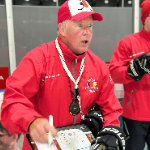
The other day at the rink, I sat down with a passionate and well-meaning youth coach over some truly terrible arena coffee. Before his team’s U10 practice, he proudly handed me his first-quarter seasonal plan and that night’s practice plan.
Both were detailed, structured, and impressively thorough. It was clear he had used a digital practice planning tool—and used it well. His plan had been shared in advance with players and parents, complete with key execution points (KEPs), small area games (SAGs), coach positioning diagrams, and equipment lists. Each activity was labeled, timed, and paired with concise key teaching points (KTPs) written in language his players could relate to.
He even had variations and progressions mapped out. It was textbook good planning—evidence of enthusiasm and care for his players’ development.
But as the players and parents arrived, something didn’t match the meticulous plan.
The kids looked tired. They weren’t smiling, talking, or buzzing about what was to come. One parent mentioned it was their 10th practice since evaluations—and thankfully, not another week of early-morning skates.
Before the session began, I asked the coach and his staff to keep one question in mind throughout practice:
“How much do you think is too much?”
I didn’t want an answer right away. I wanted them to think about it, to see it unfold over the next 90 minutes.
Here’s what we discovered together.
1. Avoid “Firefighting Coaching” — The Fix-It-Now Trap
Chasing errors in real time rarely leads to improvement. Over-correcting and filling every gap with instruction overwhelms players and can paralyze them with fear of failure. Real learning takes time and spacing. Skill development can’t be crammed—it needs breathing room.
2. Return to the Seasonal Plan
Let your players, not the drill book, drive your interventions. Reference plans and curriculum materials are guides, not rules. Create a simple checklist that helps you recognize when you’re on track versus when you’ve drifted into “chasing the game.”
3. Age and Stage Matter
Know what your players can handle for their developmental level. U10 players benefit from short, fun, focused sessions—not high volume or marathon practices. Consult Long-Term Athlete Development (LTAD) models or your federation’s skill inventories. Meet recommendations, but don’t exceed them.
4. Three Drills or SAGs Are Enough
Three well-designed activities—with variations and progressions—can fill an entire practice effectively. Overlearning through repetition builds activity memory, confidence, and automaticity. You don’t need ten drills when three great ones will do.
5. Feedback and Reinforcement
Choose analogies that players understand. Keep feedback concise, engaging, and positive. Recognize effort, energy, and small wins. Use chants, cheers, and rituals that connect the team emotionally. Track what works and make it part of your culture.
6. Reflect and Adjust
Reflection is as vital as planning. Whether it’s a brief post-practice huddle or a quiet drive home, use that time to align what you planned with what your players actually needed. It’s how coaches grow in real time.
A week later, the coach told me they had shortened their ice sessions from 90 to 60 minutes, cut back weekly frequency, added off-ice team-building time, and simplified their on-ice structure. They also flipped their feedback approach—less correcting, more catching players doing it right.
They got it.
Sometimes, in coaching, enough is enough.





